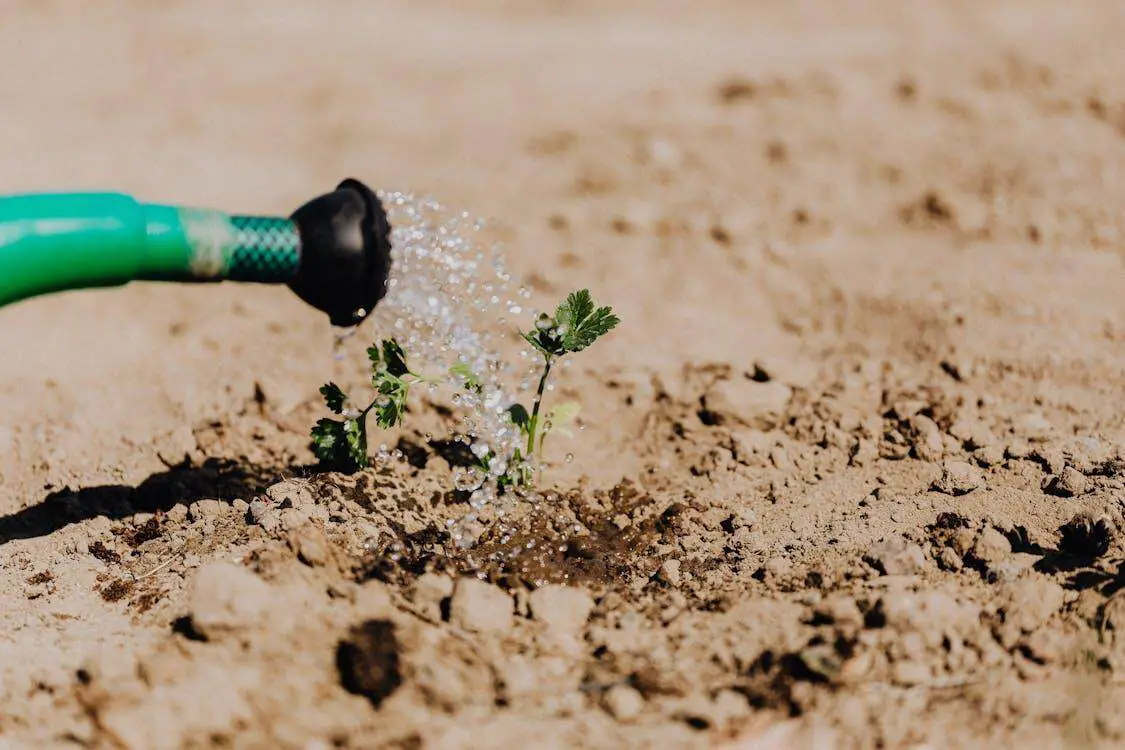Imagine entering your garden and being greeted by vibrant, healthy plants flourishing under the gentle water drip. This is the promise of drip irrigation—an innovative, sustainable watering method that conserves water while nurturing your plants.
Drip irrigation delivers water directly to the soil around your plants, reducing waste and ensuring every drop serves its purpose.
This guide will show you how to set up a drip irrigation system that makes your gardening efforts efficient and eco-friendly. Ready to transform your garden into a lush oasis with minimal water use? Let’s get started.
Why Choose Drip?
Discover the benefits of drip irrigation: a water-saving solution that boosts garden health, cuts costs, and supports environmental conservation—all with targeted, efficient watering.
1. Environmental Impact
Choosing a drip irrigation system for your garden significantly reduces water consumption, vital for our planet's health. Traditional watering methods can lead to excessive runoff and evaporation, but drip irrigation ensures water reaches the roots where plants need it most.
This method supports sustainable gardening by using water resources wisely, helping you contribute to global conservation efforts.
2. Economical Savings
Although purchasing a garden drip irrigation system may be seen as an extra cost, it is a cost that is repaid.
As water is directly administered at the root level of the plants and is not wasted, less water is used, and it is perhaps even possible to reduce your water bill quite significantly over time.
Additionally, this system reduces the need for costly replacements and repairs associated with more traditional, less efficient watering systems.
3. Plant Health
A drip irrigation system promotes healthier, more robust plants. By providing a steady, controlled water supply directly to the root zone, plants experience less stress and grow more vigorously.
Targeted, deep watering encourages more profound root growth, which enhances the plant's stability and access to nutrients, resulting in a more flourishing garden.
Types of Drip Irrigation Systems
Each type of drip irrigation system offers specific benefits, making it easy to choose the right one for your garden’s needs.
Whether managing a small backyard garden or a large agricultural project, a drip irrigation solution can enhance plant health and conserve water effectively.
1. Porous Soaker Hoses
Porous soaker hoses are an excellent choice for gardeners cultivating rows of plants. These hoses allow water to seep through tiny pores along their length, directly providing a uniform moisture distribution to the plant roots.
This type of hose is simple to install and best laid along straight lines, making it a go-to for vegetable gardens and flower beds.
2. Drip Tape
Drip tape is the ideal solution for larger garden areas. It’s thinner and more flexible than other types of drip tubing, making it perfect for extensive layouts.
Drip tape distributes water evenly, ensuring that every part of your garden receives the hydration it needs without any waste. Gardeners looking to irrigate large patches of crops or extensive flower gardens will find drip tape effective and economical.
3. Emitter Drip System
When precision is critical, an emitter drip system is the best choice. This system uses individual emitters to deliver a specified amount of water directly to each plant's base.
It’s particularly beneficial for gardens with varied water needs or container gardens where each pot can have its emitter. The precise control over water delivery ensures that each plant gets exactly what it needs to thrive, no more, no less.
Planning Your Drip System
Following these steps, you’ll set up a drip irrigation system that meets your garden's needs, conserves water, and promotes healthier plants. Remember, a little planning goes a long way toward a thriving garden.
1. Step-by-Step Guide
Before installing, assessing your garden's layout and water needs is crucial. Start by sketching a map of your garden, noting the locations of plants and their specific water requirements.
Consider factors like sun exposure and plant type to estimate how much water each area needs. This initial step ensures your drip irrigation system is both efficient and effective.
2. Equipment Checklist
For a successful drip irrigation setup, you'll need the right equipment. Your essential checklist should include tubing, emitters, a timer, filters, pressure regulators, and connectors. Each component plays a vital role in ensuring your system works smoothly.
A comprehensive garden drip irrigation kit can provide all these essentials, making the process more streamlined and straightforward.
3. Installation Tips
Install a filter to prevent emitter clogs when setting up your drip irrigation system. Include a pressure regulator to maintain optimal water pressure and avoid hose damage. Always test your system for leaks and functionality before finalizing the layout.
During installation, carefully connect fittings without over-tightening to prevent cracks and leaks. Following these straightforward tips ensures your system operates efficiently, providing precise watering to your garden without any hassles.
Embrace Efficient Gardening with Drip Irrigation
You can now see how simple and effective drip irrigation is for maintaining a thriving garden while conserving water. With the proper setup, your garden will look better, be more sustainable, and be easier to manage.
As you continue to care for your plants, remember that each drop of water you save contributes to a healthier planet. So why not take the next step?
For more tips on efficient gardening and to keep your garden lush and weed-free, subscribe to our “Weed Free Gardening” newsletter. Together, let's make every garden a testament to efficiency and beauty.





